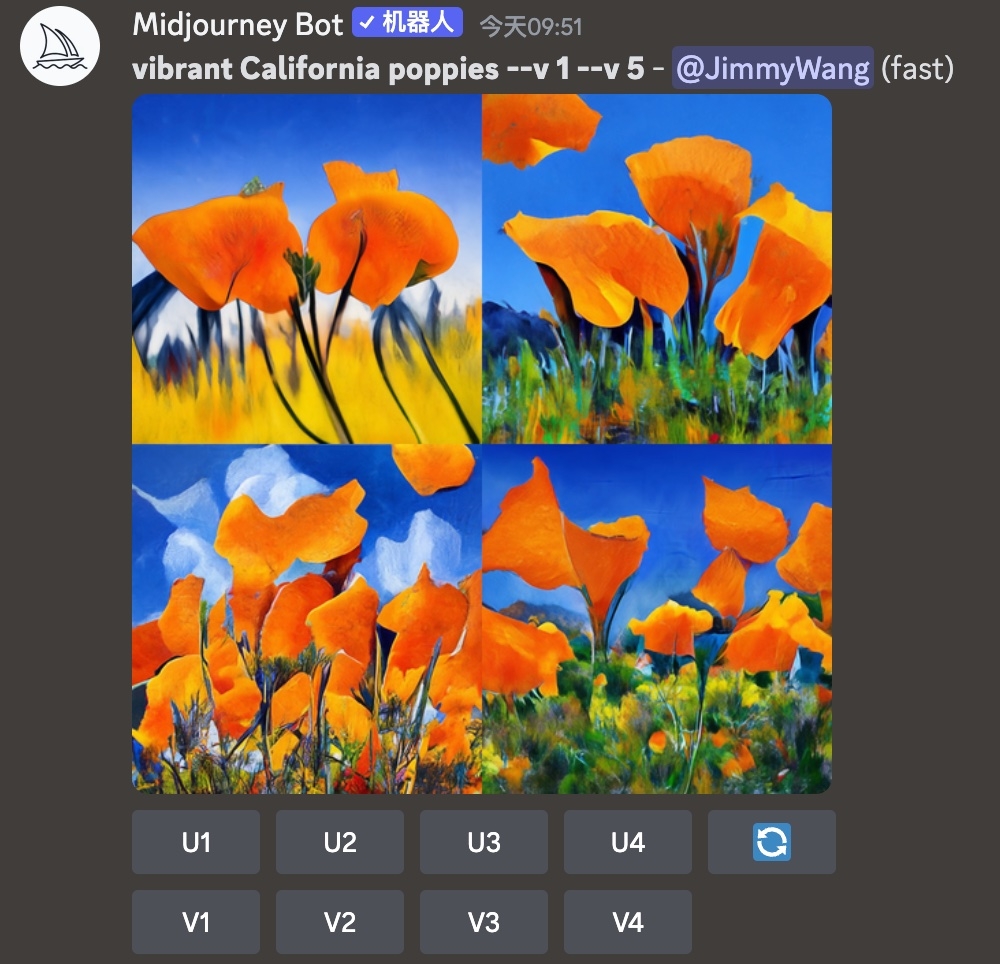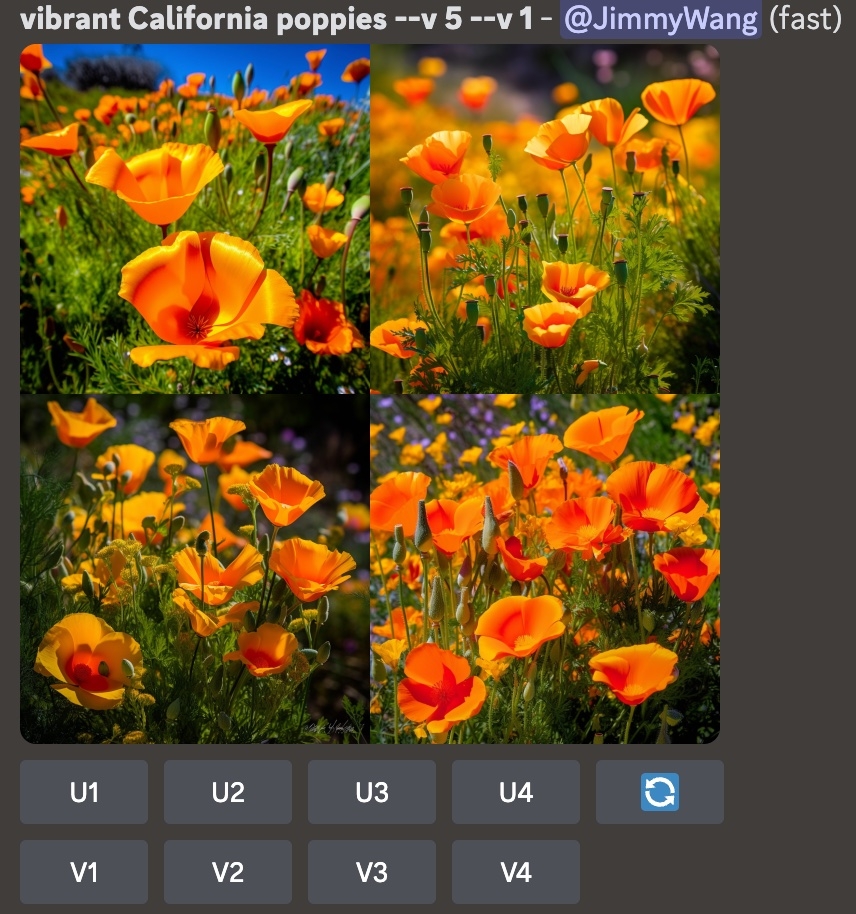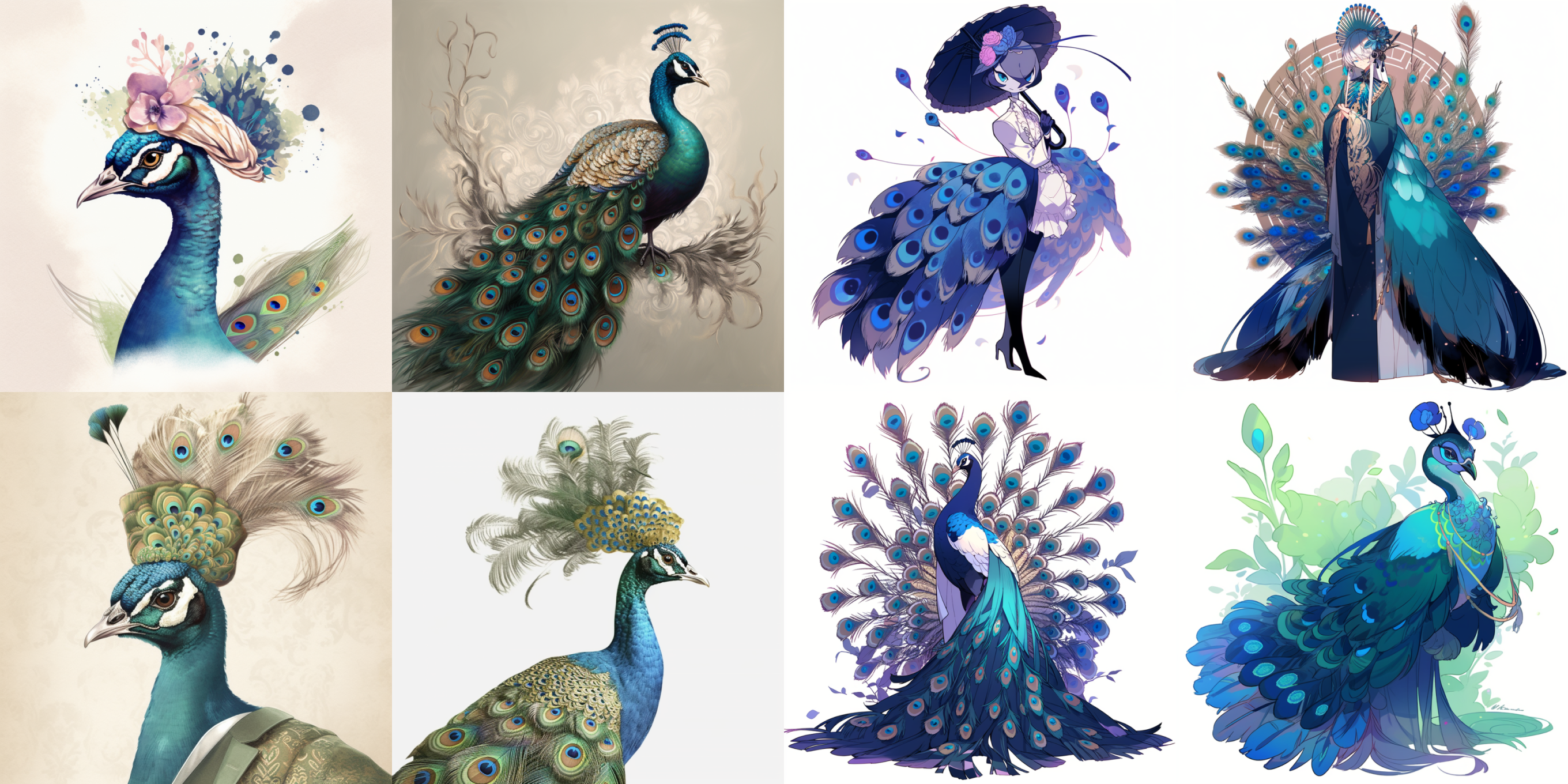In simple terms, you can think of these parameters as the official fixed prompt template, and this template contains some special characters, so that the model can 100% guarantee the consistency of the output results while improving the accuracy and input efficiency of the prompt.
If you have used ChatGPT, you may have encountered this scenario: using the same prompt template as others, but unable to make ChatGPT generate the same content.
and Midjourney Because it is a picture category and is relatively vertical, they made many common prompt statements for pictures into templates. For example, the aspect ratio of pictures is 1:1, 2:3, 4:7, etc. If you continue the usage habit of ChatGPT, you will need to keep repeating Aspect Ratios 1:1, etc. in the prompt. Moreover, everyone expresses Aspect Ratios differently, and the model also needs to understand what people say, which is more troublesome.
Therefore, Midjourney has designed some parameters that you can use quickly. For example, for Aspect Ratio, you only need to enter — ar 1:1. At the same time, because the expression method is fixed, everyone will use this method to change the aspect ratio. Midjourney can adjust the model to ensure the consistency of the output image.
Because it is stable and necessary, I will teach you the parameters first.
Version
Currently, Midjourney supports multiple versions, the latest version is V5, which is slightly different from ChatGPT. The feeling I get from Midjourney is that the bigger the version, the better it is, but the things it excels at are different. For the relevant differences, please refer to the differences between Midjourney versions.
See the table below for how to use the Version parameter. You can also adjust the default version in the settings. For related tutorials, please refer to Midjourney Basic Settings.
|
Calling Methods |
Use Cases |
Precautions |
|
Add a space after the keyword, and then the version parameter:
|
vibrant california poppies --v 5 |
Only versions 1, 2, 3, 4, and 5 are supported. |
Because you can add version parameters directly in the prompt and set the version in the settings, you may encounter a situation like the following (I want to generate a version 1 chart, but the settings are set to 5, what should I do?):

At this point, the model will run these parameters in order from left to right. According to the above example, the generated image is actually the V1 version, which can be compared with the V5 version below:

Aspect Ratios
The first parameter is the aspect ratio of the image. It is used as follows, and the version differences are as follows:
|
Calling Methods |
Use Cases |
Precautions |
V5 |
V4 |
V3 |
niji |
|
Add a space after the keyword, and then the aspect ratio parameter:
|
vibrant california poppies --ar 5:4 |
|
✅ Any ratio is supported. However, aspect ratios above 2:1 are experimental and may produce unpredictable results. |
✅ 1:2 to 2:1 |
✅ 5:2 to 2:5 |
✅ 1:2 to 2:1 |
In addition, there are also best practices for aspect ratio in the industry:
- 5:4 is mostly used for traditional printing
- 3:2 is mostly used for photo printing
- 7:4 ratio is close to the ratio of HD TV or smartphone

No
This parameter means "no". If you don't want trees to appear in the AI-generated images, just enter plants:
|
Calling Methods |
Use Cases |
Precautions |
V5 |
V4 |
V3 |
niji |
|
Add a space after the keyword, and then the content you don’t want the AI to generate:
|
—no plants |
none |
✅ |
✅ |
✅ |
✅ |
Chaos
This parameter is a bit like Top P in ChatGPT, which mainly controls the randomness of the model. The higher the number, the more likely it is to produce some unexpected results. The lower the number, the higher the consistency. Look at the official example, prompt is watermelon owl hybrid.
This is when Chaos is 0. The consistency is relatively high. The way the watermelon and the owl are merged is similar in the four outputs. In addition, in a single output, the style similarity of the four pictures (four squares) is also relatively high:

This is when Chaos is 100. You will find that the fusion styles of multiple outputs are different, and even in a single output, the styles of the four images are quite different. If you want AI to help you do some exploratory things, I suggest you turn up Chaos a little bit in the early stage, and the results will be more divergent.

|
Calling Methods |
Use Cases |
Precautions |
V5 |
V4 |
V3 |
niji |
|
Add a space after the keyword, followed by a number:
|
—c 10 |
You can enter 0 - 100, the default is 0 |
✅ |
✅ |
✅ |
✅ |
Stylize
This parameter is a bit like Temperature in ChatGPT, and it mainly controls the stylization of the generated image. Simply put, the lower the value, the more it fits the description of the prompt, and the higher the value, the stronger the artistic quality, but the weaker the correlation with the prompt.
Let's take a look at the official examples. The prompts are all colorful risographs of a fig. Risograph is a digital printing machine that uses templates and special inks to produce printed products. Risograph is usually used to produce low-cost printed products such as posters and brochures. This printing machine can produce special color and texture effects. The first three pictures basically fit the style of risograph, but the four pictures in the lower right corner are very different. The model adds a lot of drama.

In addition to entering it in the prompt, you can also adjust the default version in the settings. For related tutorials, please refer to Midjourney Basic Settings.
|
Calling Methods |
Use Cases |
Precautions |
V5 |
V4 |
V3 |
niji |
|
Add a space after the keyword, followed by a number:
|
—s 50 |
The default is 100 |
✅ |
✅ |
✅ |
✅ |
Niji
In fact, the Niji model was developed by Midjourney and Spellbrush. "Niji" is Japanese "にじ", which means "rainbow" or "2D".
It is good at generating anime-like images. For example, the prompt is fancy peacock, the left picture is the v5 model, and the right picture is the niji v5 model. The right picture is more cartoon-like:

The usage is similar to Version. Just enter —niji at the end of the text prompt.
|
Calling Methods |
Use Cases |
Precautions |
|
Add a space after the keyword, and then the version parameter:
|
vibrant california poppies --niji |
Some parameters are not valid for Niji. You can check which parameters are not valid for Niji in the complete list. |